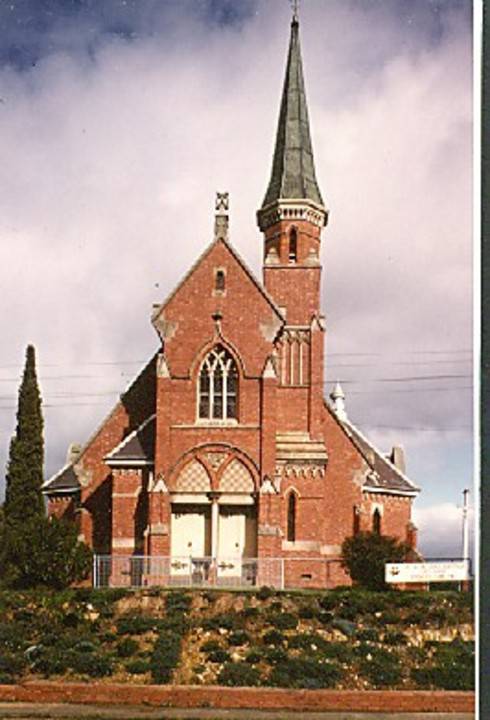| Back to search results » | Back to search page » |
|
Former Presbyterian Church - Castlemaine Historic Area
Other NameUniting Church Location12 Lyttleton Street,, CASTLEMAINE VIC 3450 - Property No B5406
File NumberB5406LevelRegional |
|
Statement of Significance
A church built in 1894 to a remarkably eclectic design by the Ballarat architect C D Figgis, described at the time as being "an adaptation of Florentine or Padua Gothic". It is striking for its bold asymmetrical massing, the bellcast profile conical tower roof, the ogee label mould of the high west window, the bracketted corbel table of the eave and the entrance divided by a trumeau.
Classified: 17/11/1983
Part of Castlemaine Historic Area B4894
Castlemaine grew as a result of the discovery of gold along Forest Creek in July, 1851. By December of that year the population on the field was greater than that of Melbourne. In 1852 Mr Templeton surveyed the township of Castlemaine and in 1853 the first auction of the town site was held.
The Castlemaine goldfield was allegedly the richest alluvial goldfield in the world. Such was the prosperity of the diggers that the townsfolk were optimistically expectant of Castlemaine becoming Victoria's second city. The prosperity of the diggers and the optimistic townsfolk is reflected in the high number of imposing buildings erected in the first few years of the town's life. However, the rich alluvial diggings were worked out within 15-20 years. From the 1870's the town's population began to drift away, but they left behind a rich legacy of the town's former prosperity in the form of its buildings.
Within the Castlemaine Historic Area may be found many items of significance. These range from intact nineteenth century streetscapes composed of imposing public buildings to simple miner's cottages. Within the historic area there are a number of identifiable component areas, each telling an important part of the history of Castlemaine. In addition, there are many other items of significance outside of these areas, but still within the historic area. These include the former steam flourmill, the Church of England, the Congregational Church and Forest and Barkers Creeks.
Despite the town's topographical confinements to the valley of the two creeks, the wide streets and large buildings convey an atmosphere of grand spaciousness in this central Victorian goldfields town.
Classified: 01/12/1982
Group
Religion
Category
Church




